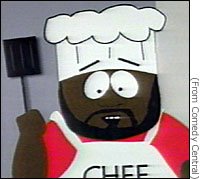How did the chef's hat originate? Does it serve a purpose?
 The chef's hat, or toque blanche (French for "white hat"), has been around for more than 400 years. Back in the 16th century, artisans (including chefs) were among the "free thinkers" who were often persecuted, imprisoned, or executed because of their views. To escape this treatment, some chefs hid in monasteries and wore the same type of clothing as the priests, including tall hats. However, chefs wore gray, while priests wore black.
The chef's hat, or toque blanche (French for "white hat"), has been around for more than 400 years. Back in the 16th century, artisans (including chefs) were among the "free thinkers" who were often persecuted, imprisoned, or executed because of their views. To escape this treatment, some chefs hid in monasteries and wore the same type of clothing as the priests, including tall hats. However, chefs wore gray, while priests wore black.But there are other theories regarding the hat's history. One source states the hat may have evolved from the stocking cap (casque a meche) worn by French chefs throughout the years. The color of the casque a meche indicated the chef's rank.
Sometime in the mid-1800s, chef Marie-Antoine Careme decided white was a more appropriate color for toques as it indicated cleanliness in the kitchen. Careme also believed the hats should be of different heights to indicate rank. Cooks wore shorter hats than chefs. Reportedly Careme's hat was 18 inches tall.
Interestingly, the number of pleats in a chef's hat is also a status symbol. Many toques have exactly 100 pleats, supposedly the number of ways a chef can prepare an egg.
Receive post updates by Email



























 Add my feed to your Rss
Add my feed to your Rss
